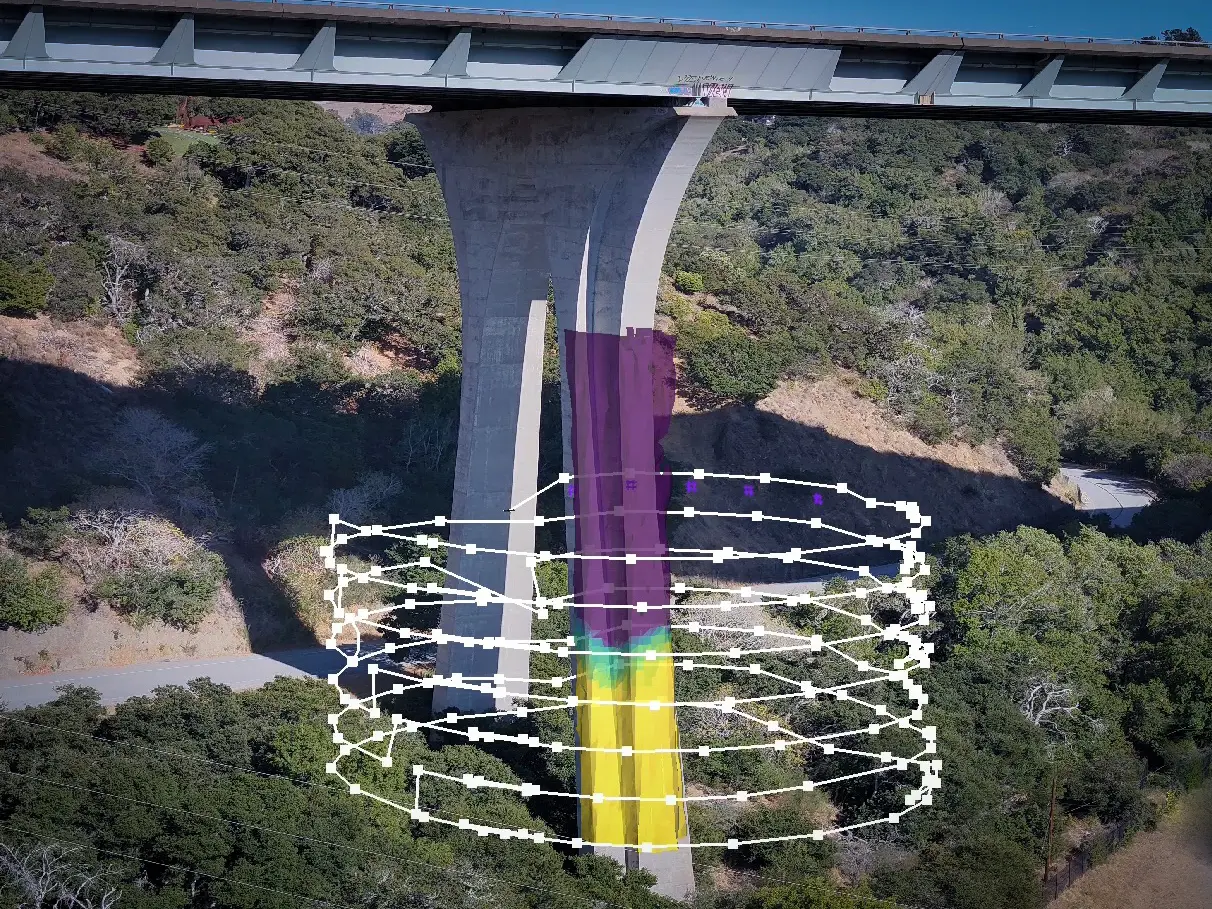If you are responsible for asset inspections, you know the challenge: completing the task usually requires a significant amount of manual labor, which can lead to inefficiencies and increased operational costs. It’s no surprise that many organizations, like yours, are exploring how to improve safety, efficiency, and effectiveness through aerial robotics. Drone inspections are attractive because they enable faster, safer, and more accurate reviews. Regardless of what you are inspecting, transitioning to aerial robotics brings significant benefits.
When considering evolving your inspections towards the use of aerial robotics, here are a few aspects to consider:
Examples of Assets for Inspection
Asset inspections involve the systematic examination and evaluation of various structures and objects to ensure they are in good condition, safe, and compliant with regulations. Examples of assets that are often subject to inspections include:
- Bridges: Assessing structural integrity, detecting cracks and corrosion.
- Boats and Ships: Inspecting hulls and assessing underwater elements.
- Buildings: Facade inspections, roof assessments, and internal structural evaluations.
- Power Lines and Electrical Infrastructure: Checking damaged cables and assessing tower conditions.
- Oil Fields and Refineries: Detecting leaks, monitoring pipeline integrity, and responding to physical or environmental threats.
- Wind Turbines: Inspecting blades and assessing tower structures.
- Solar Panels and Farms: Checking damaged panels and inspecting electrical connections.
- Rail Tracks and Infrastructure: Checking track integrity and inspecting railway sleepers.
- Dams and Reservoirs: Assessing structural integrity, inspecting sluices.
- Industrial Facilities: Machinery inspections and building structural evaluations.
The Need for Advanced Inspection Solutions
Traditional inspection methods have long had their issues. Manual inspections are time-consuming and costly, exposing personnel to risks in dangerous environments. These methods can also result in incomplete or inaccurate data collection, leading to potential oversights and increased maintenance costs.
Aerial robotics offers an innovative solution to these problems. Drones can conduct inspections faster, safer, and more accurately, reducing the need for human intervention and allowing organizations to allocate resources more efficiently, supporting intelligent asset management.
Key Factors in Choosing an Aerial Inspection Solution
1. Autonomy for Increased Efficiency: Aerial robots with advanced autonomy features can navigate complex environments independently, significantly reducing the need for human intervention. For example, on a densely built construction site, a drone that autonomously avoids obstacles like cranes and scaffolding maintains workflow continuity and minimizes collision risk, streamlining the inspection process. This autonomous capability enhances efficiency and ensures consistent and reliable data collection, essential for intelligent asset management.

2. Effective Data Collection in Various Lighting Conditions: High-quality data collection in various lighting conditions is crucial for accurate inspections. For example, inspections under bridges or in poorly lit tunnels require drones with built-in flashlights, HDR (High Dynamic Range) functionality, and wider apertures to illuminate dark areas and capture clear images. Additionally, pixel binning can increase light sensitivity, improving image quality even at slightly reduced resolution. These features ensure that no detail is missed due to lighting limitations, maintaining high image quality throughout the inspection process.

3. Operations in Challenging Environments: Aerial robots must operate effectively in environments where GPS signals are unreliable, such as under bridges, in indoor warehouses, or areas with significant electromagnetic interference (EMI). For example, inspections near power lines or inside metal structures require a drone with a robust vision-based navigation system. This ensures reliable data collection in environments where GPS-dependent aerial robots may fail, increasing the effectiveness of the infrastructure inspection process.

4. Comprehensive Visual Coverage for Efficient Inspections: Effective inspections require drones with high-resolution cameras and a wide field of view (FOV) to reduce the number of required passes. A drone that can capture large sections of infrastructure in one pass can quickly and accurately inspect entire building facades, reducing time spent on-site. This capability is beneficial not only for building inspections but also for other applications such as bridge inspections, solar panel farms, wind turbines, and large industrial facilities. Such comprehensive visual coverage is crucial for automated visual inspection processes.

5. Validation of Collected Data: Ensuring comprehensive data collection during inspections is crucial. For example, after inspecting a building, the ability to quickly create 3D models on-site from collected images helps the operator verify that all necessary angles and elements have been covered. This saves a significant amount of time and resources, eliminating the need to return to the site and ensuring that nothing important is missed during the initial inspection. This capability enhances the effectiveness of asset inspection software.

6. Integration with Photogrammetry Software: Effective data integration is key to transforming images collected by drones into useful information. The ability to directly upload and process images using solutions like Pix4Dmatic or Bentley Systems ContextCapture enables immediate analysis of collected data. This facilitates faster decision-making and more efficient workflow management, increasing the overall value of the inspection process. Integration with asset inspection management software is key to streamlining operations.

Conclusions
By considering these key factors, organizations can choose robotic inspection solutions that enhance safety, efficiency, and effectiveness. The benefits of advanced autonomy, effective data collection in various conditions, operation in challenging environments, comprehensive visual coverage, data validation, and seamless integration with photogrammetry software make aerial robotics an invaluable tool in asset inspections.
Would you like to learn more about how aerial robotics can revolutionize your asset inspection processes? Contact us to learn more about modern drone technology for asset inspections.



